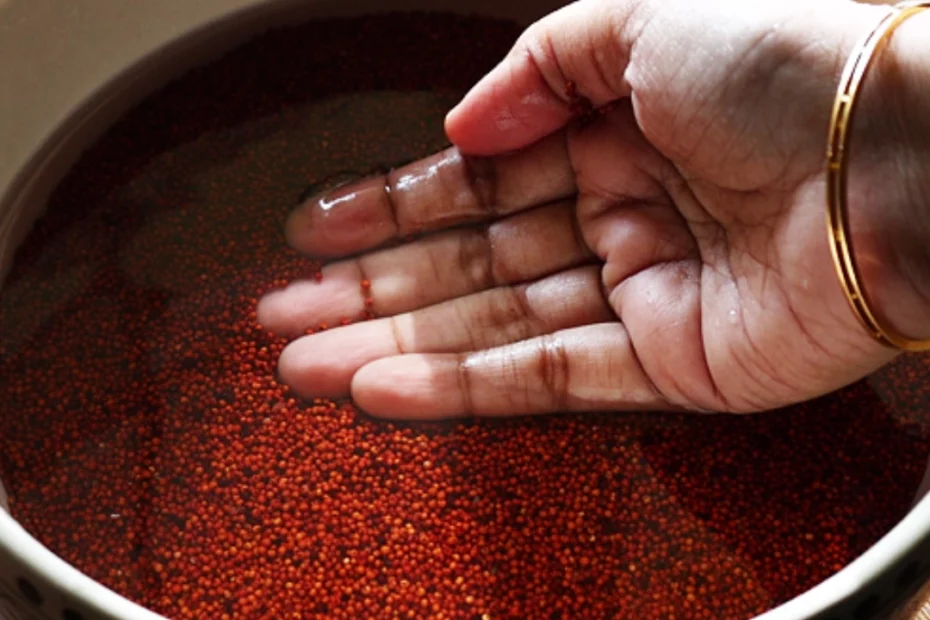Is Soaking Necessary Before Consumption of Millets?
It depends on what you want from your Millets? For better nutrition: Yes. To save time: No. To understand this, lets read why soaking is a must practice followed by some and not-soaking adopted by others.
To be accurate, let us take the case of Ragi.
The Ragi seeds have phytic acid, tannins, and enzyme inhibitors, that protect them in nature. Let us call these anti-nutrients which are the defences and are beneficial for the seeds from attacks by external forces during their growth stage. This is one of the factors why anti-nutrients in Ragi crop can resist external threats (like water scarcity, diseases and pests to some extent). However, these anti-nutrients make it difficult for human bodies to absorb the available nutrients from Ragi.
One of the anti-nutrients, phytic acid, forms salts with the essential minerals like iron, zinc, and calcium. Thus, even though these nutrients are present in ample quantities in ragi, they can’t be absorbed properly due to their combination with phytic acid.
Soaking Ragi is equivalent to the starting of the germination process. During this process, the phytates are dissolved in the excess water, thus making Fe, Ca and Zn available in either its non-ionic form or salts which are easily absorbed. Thus, soaking Ragi neutralises the phytic acid and other anti-nutrients. This neutralisation increases the bioavailability of minerals and other nutrients, making Ragi nutritious.
The Science of Soaking: Breaking it Down
Soaking Ragi encourages the seeds to sprout. Soaking activates the enzymes of the seed which initiate breaking down phytates, enzyme inhibitors and other complex substances. Further, soaking initiates a biochemical reaction reducing oligosaccharides content, making consuming ragi healthier.
Ragi requires a longer soaking time, of minimum 6 hours. The time required for soaking depends on the type and size of the Millet. The time for lentils and legumes, e.g. smaller varieties like red lentils may need 15-30 minutes, while larger legumes such as chickpeas might require overnight soaking.
Time-Saving Tips
Rinsing-Boiling Method: If you don’t have 6 hours to get the nutritional benefit of Ragi, the rinsing-boiling method can be followed. Rinse Ragi thoroughly under cold water to remove any bad seeds, stones etc. Rinse again to remove floating matter. Add water to cover the rinsed Ragi and keep in a vessel. Boil the water for 2 minutes and cover with a lid. Remove the vessel from the heat, keep the lid and let it cool for an hour. Drain the excess water and rinse the seeds with cold water. Now, these are ready to be cooked.
Hot Water Method:Pouring boiling water over cleaned Ragi speeds up soaking process. Allow for the water to sit for an hour or longer. Hot-water method reduces the total soaking time, especially during winters.
Baking Soda Boost:Ragi’s hard outer seed cover can be softened by adding water containing a dash of baking soda. Although the soaking time can be reduced, if excess quantity of baking soda is added, the taste of Ragi can change.
Bulk Pre-Soak:Pre-soak a large batch of Ragi. After soaking, drain and rinse. Freeze Ragi in portions depending on the future requirement, thus making Ragi readily available for use later. This saves time on soaking small batches. The nutritional benefits of Ragi can be made available.

